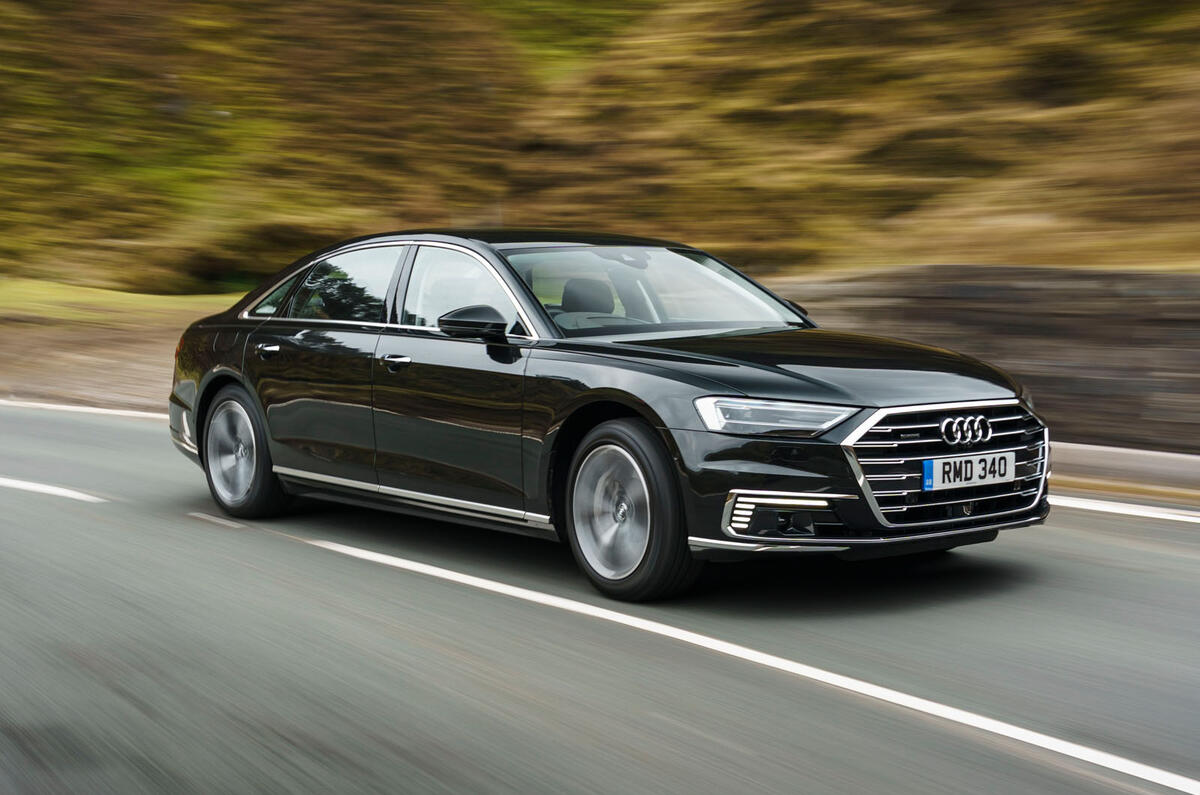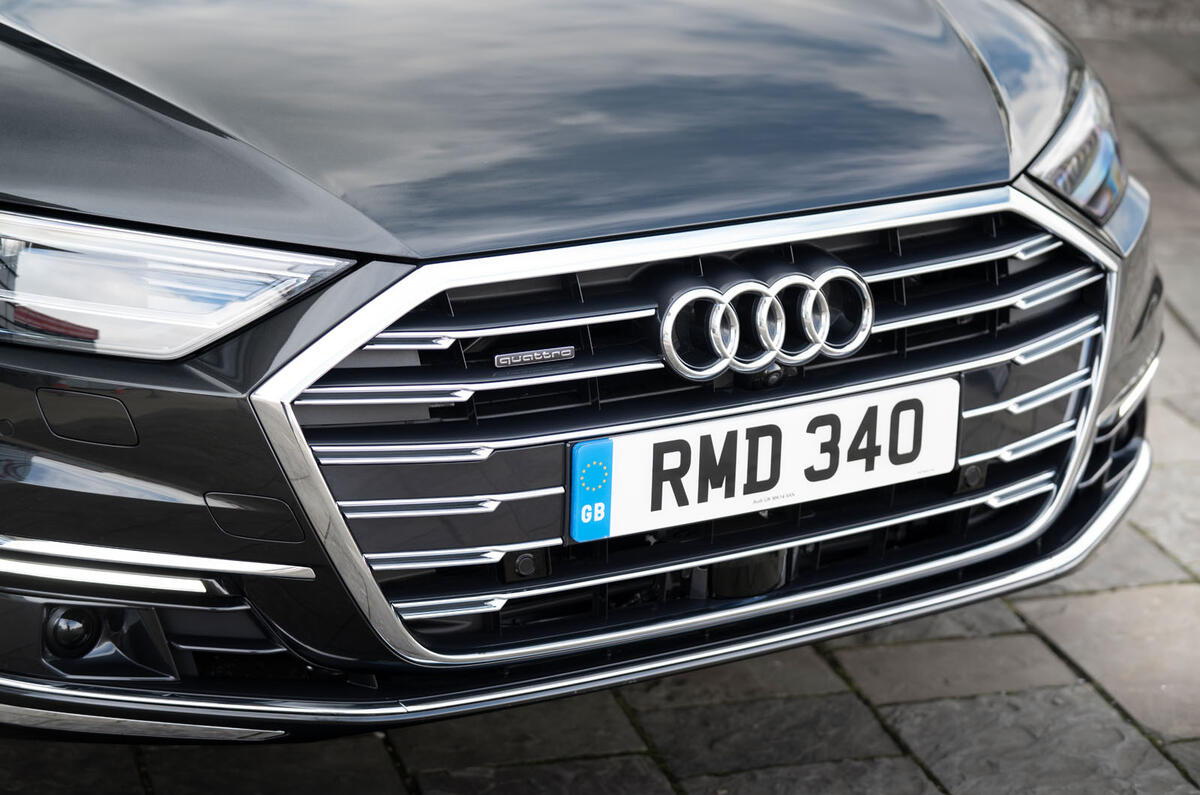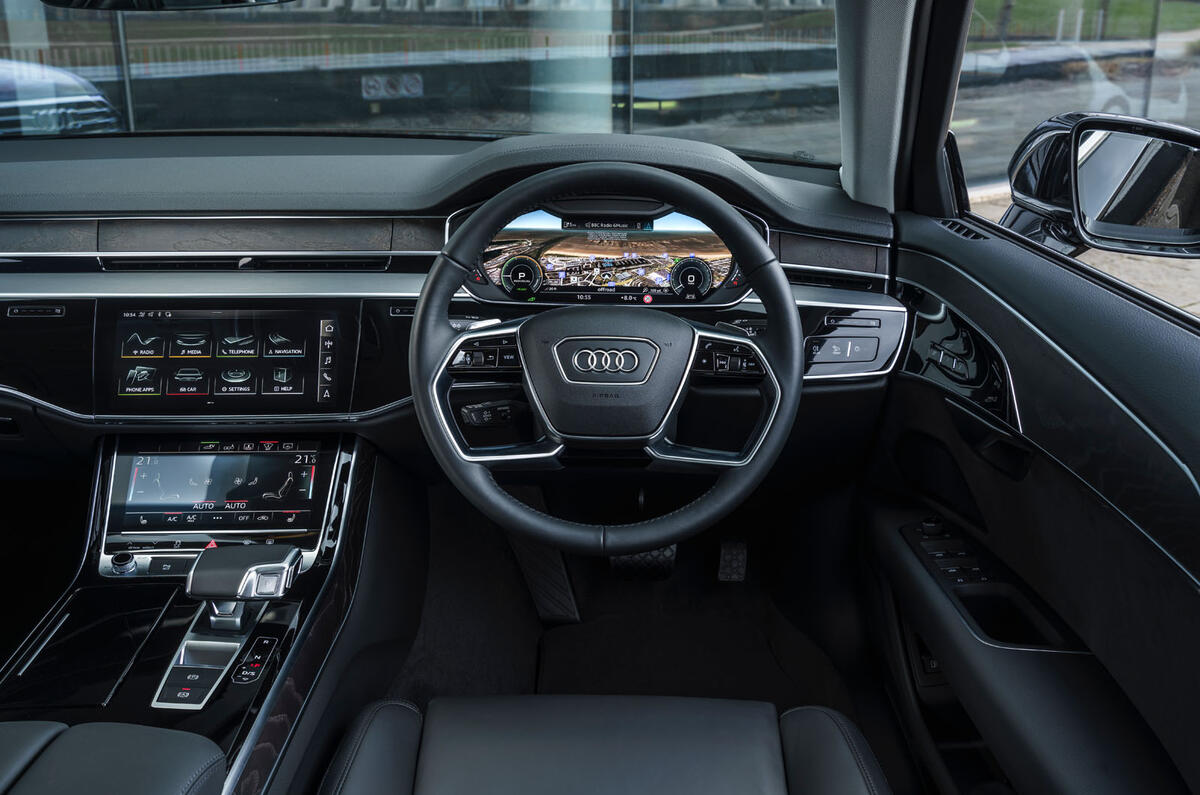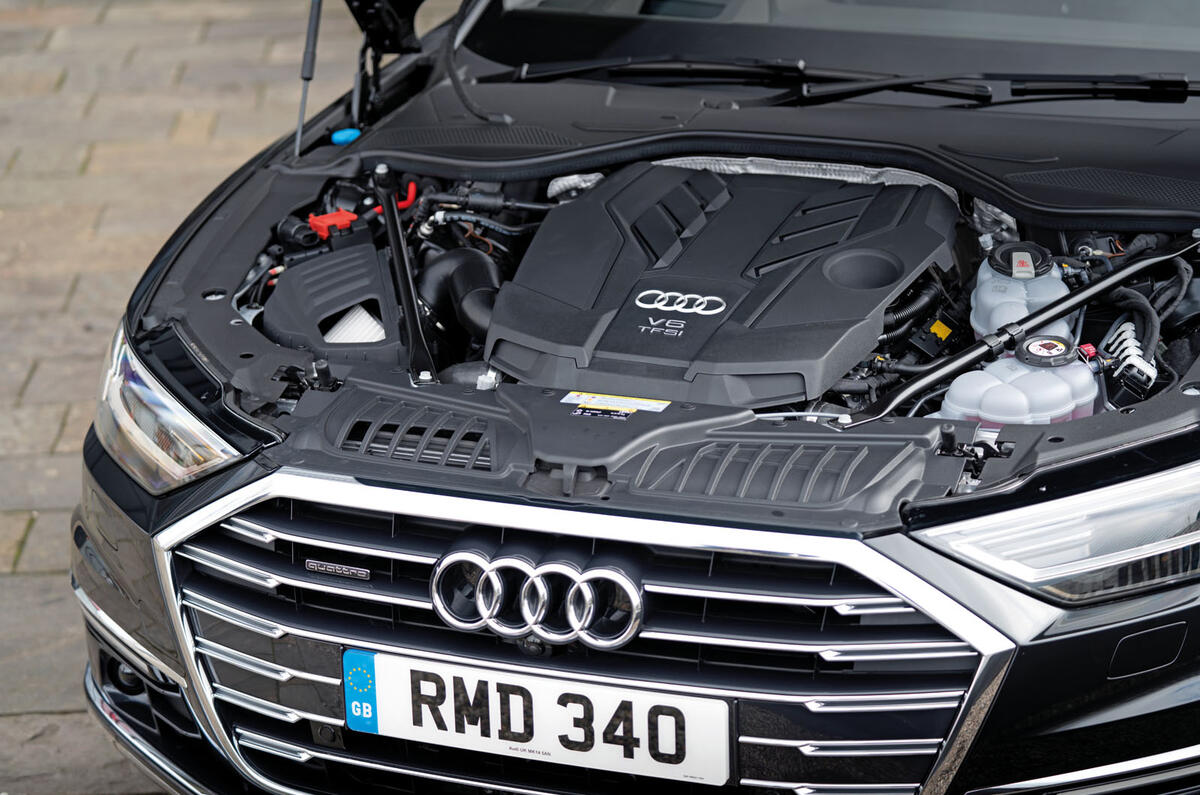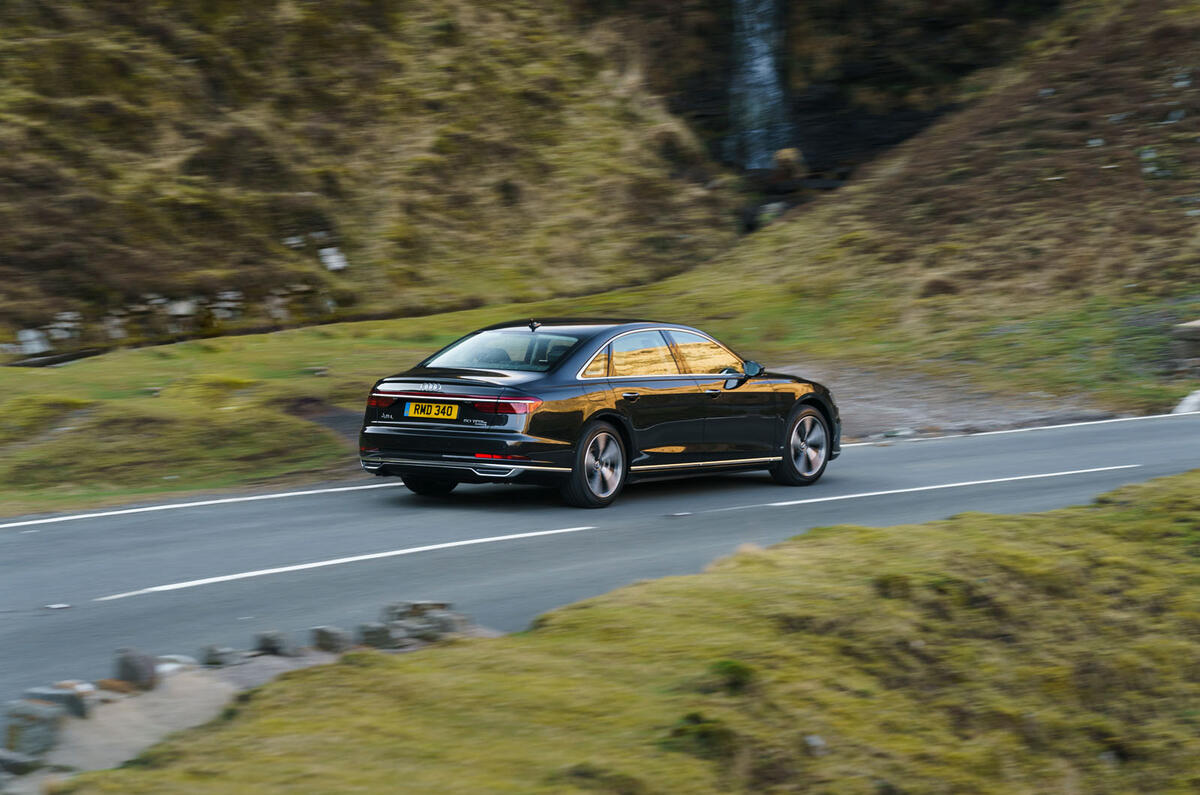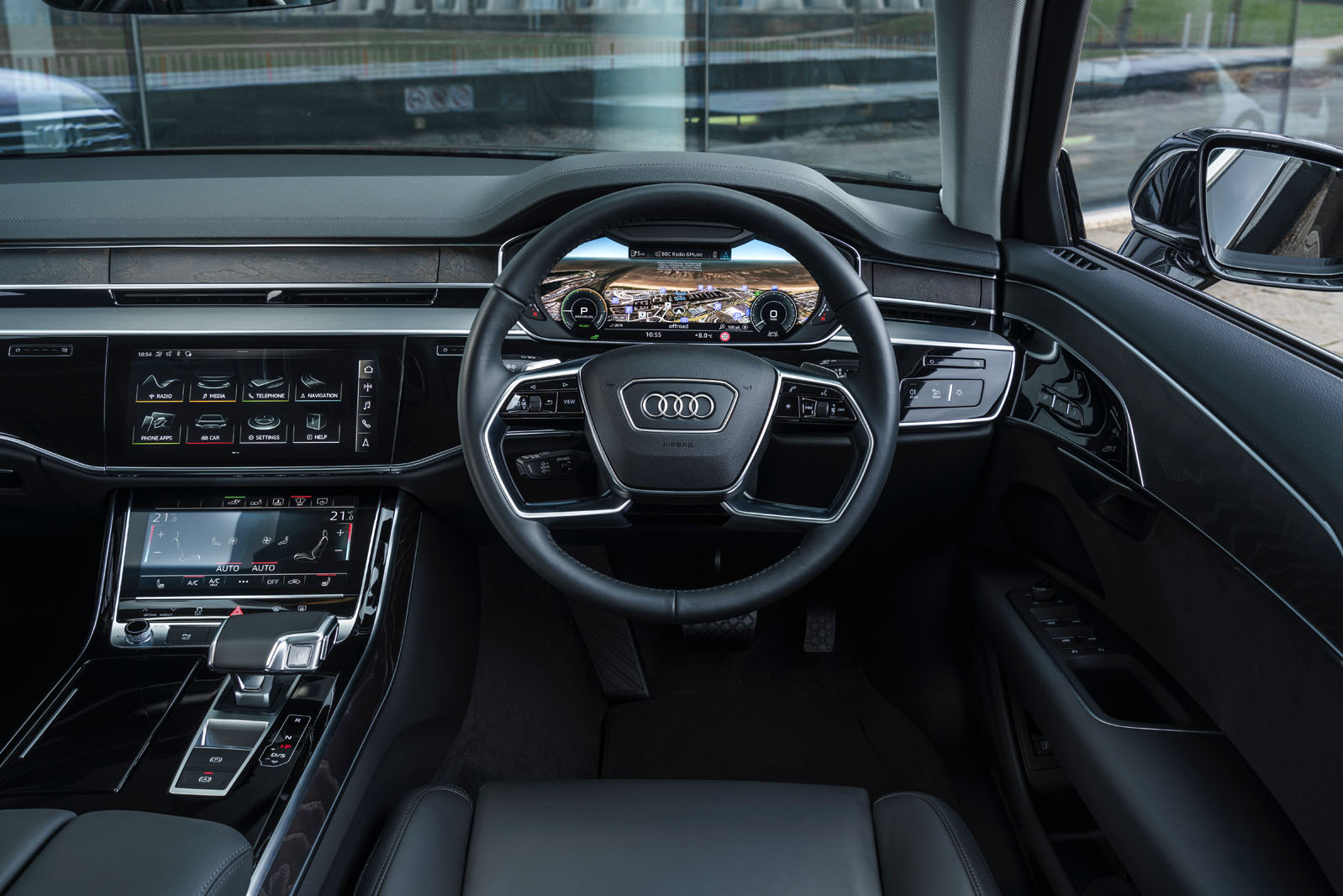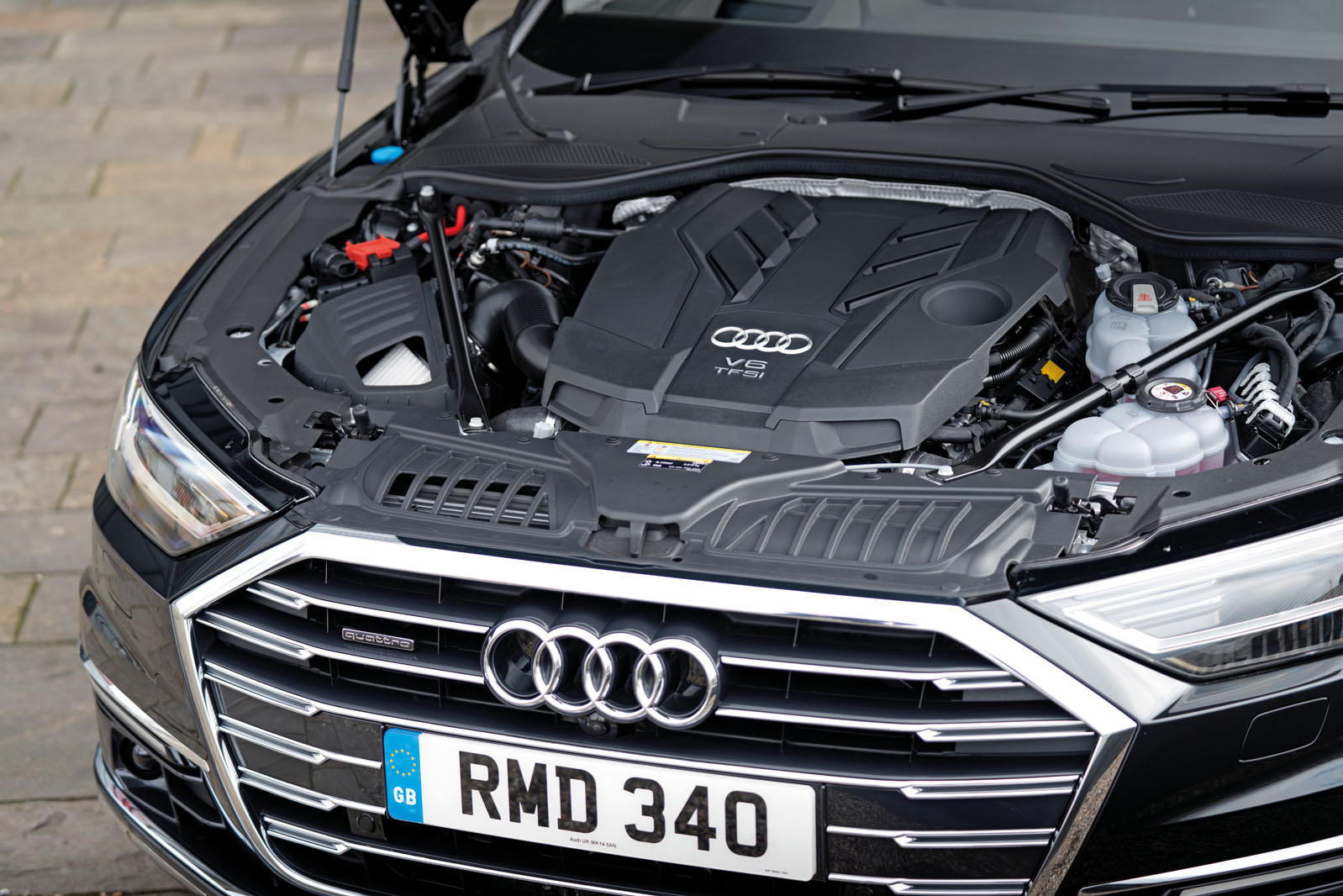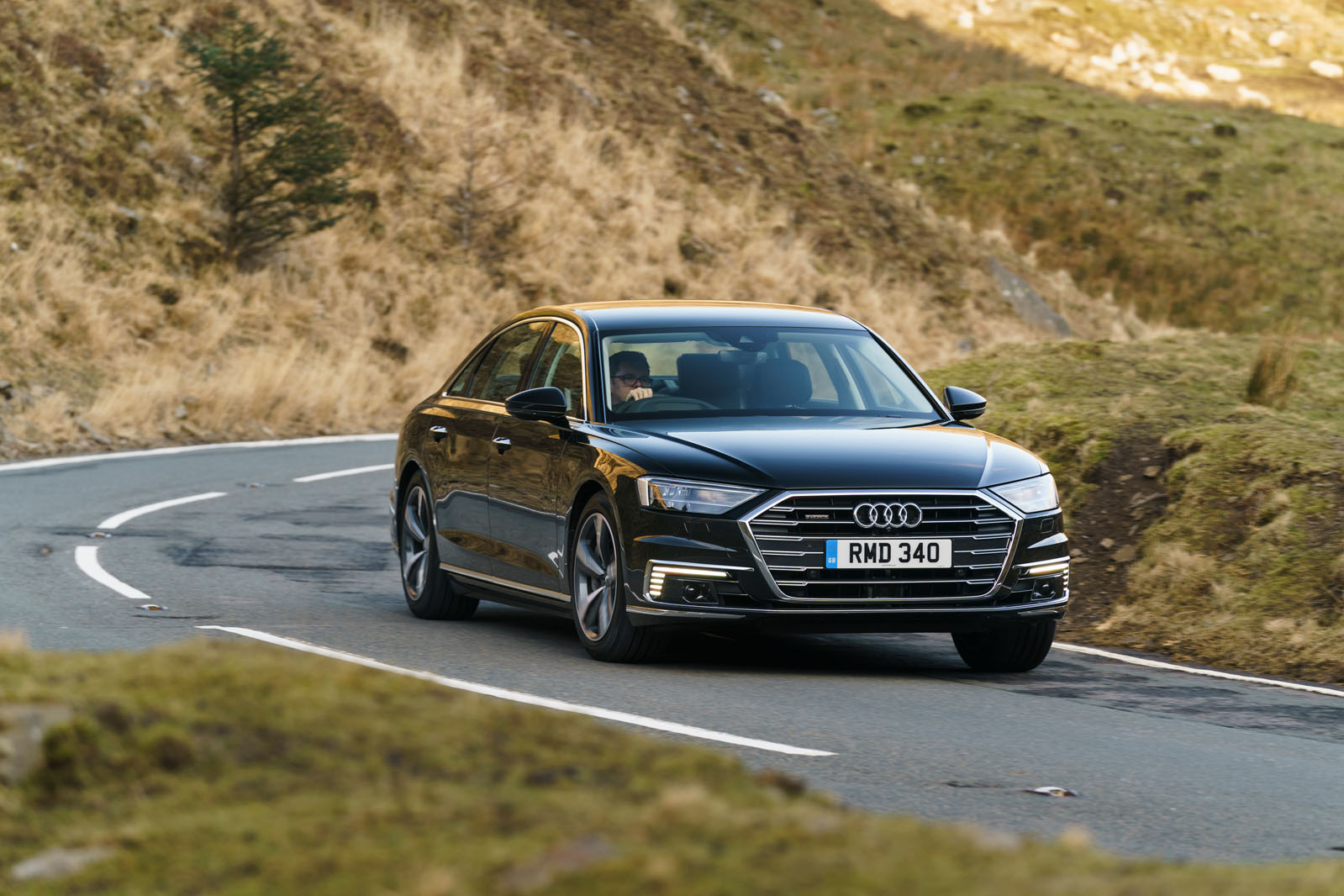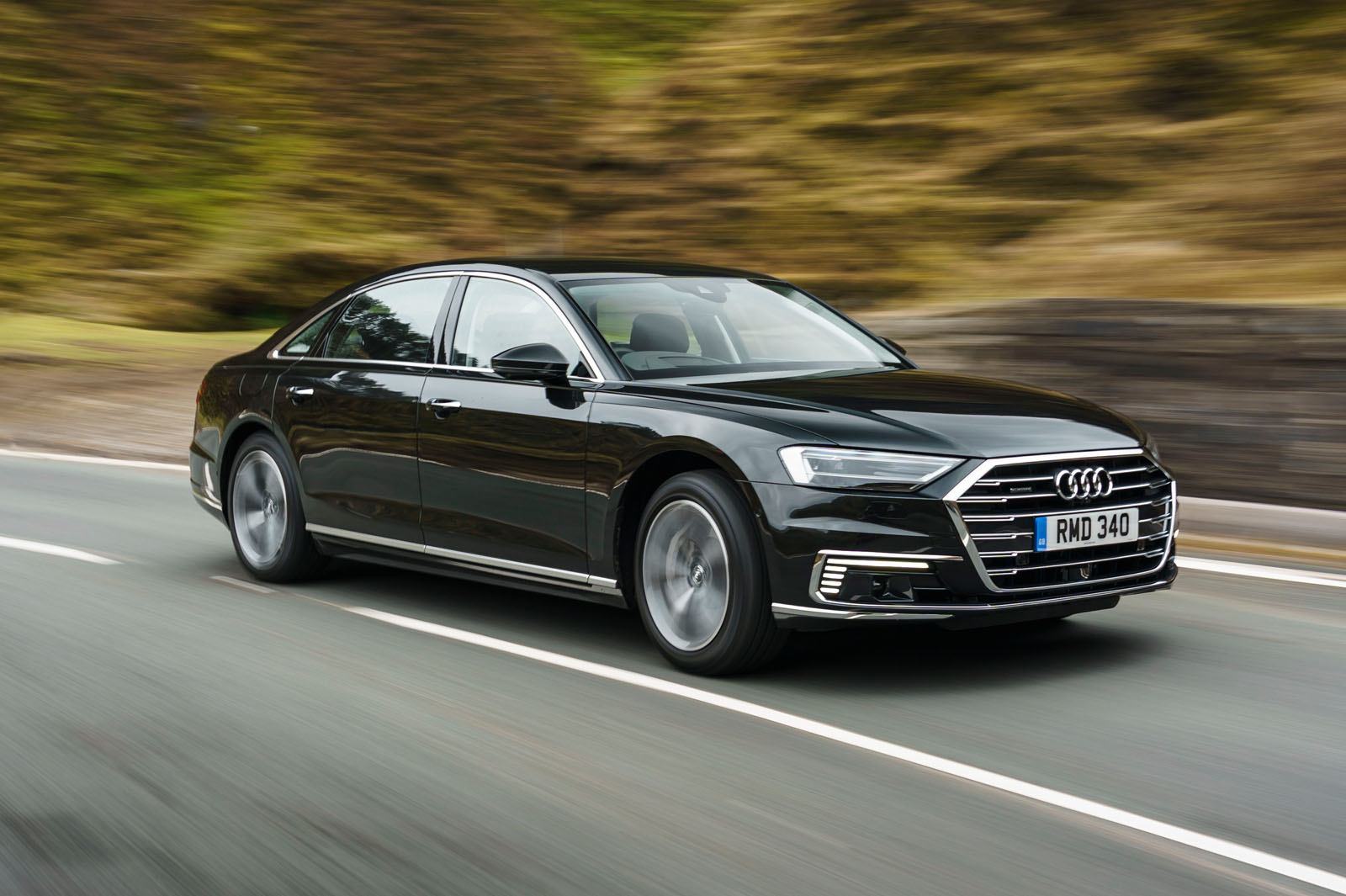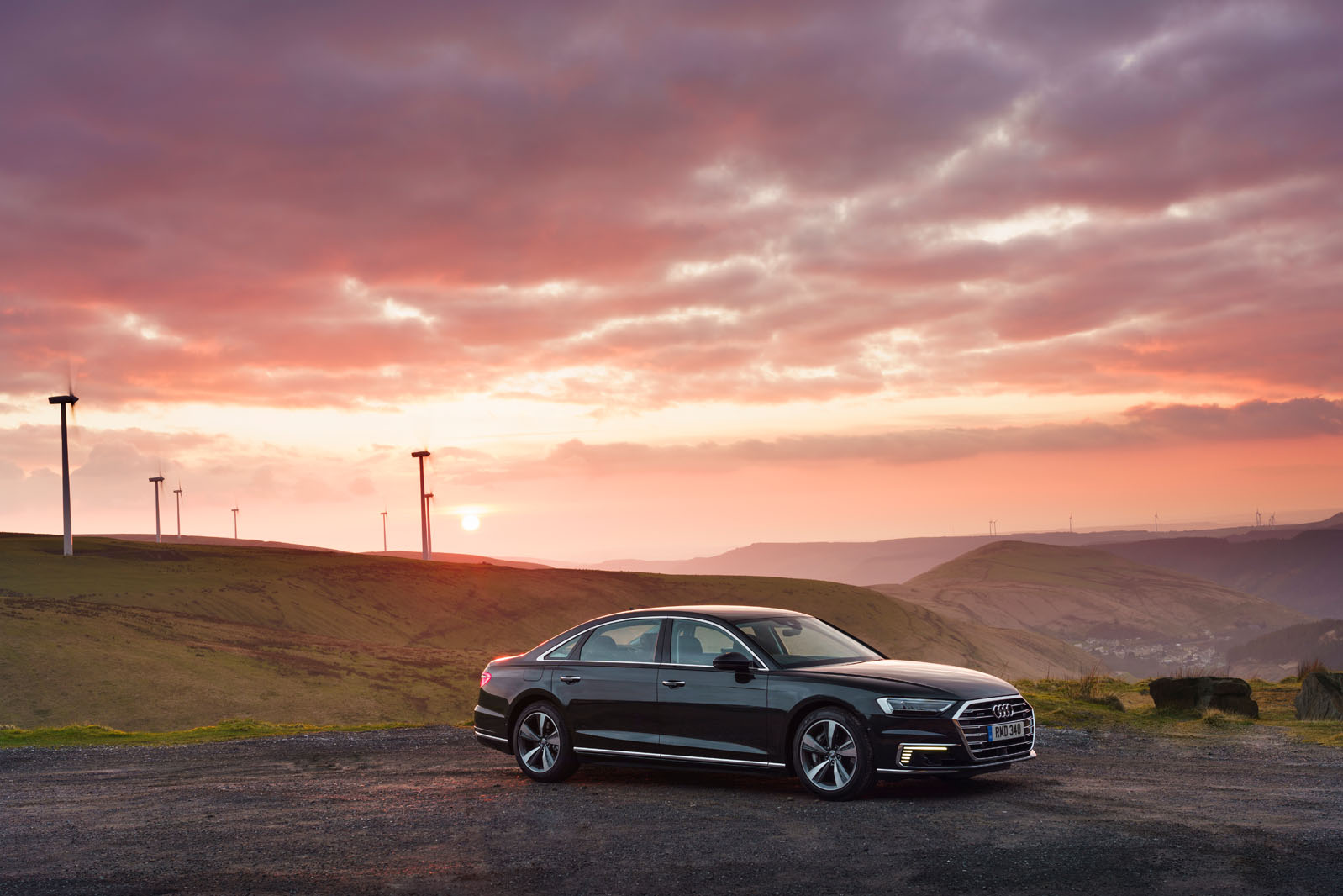lmost three years have passed since the fourth-generation Audi A8 arrived as the brand's latest super-limousine and new technological flagship, and yet somehow we’re still to subject the Audi to full road test scrutiny.
This week, that changes, although we should say that an all-new Mercedes-Benz S-Class will enter the frame this calendar year, and so whatever the verdict today, life is sure to get more arduous for this enormous and outwardly impressive Audi.
This particular version is the recent 60 TFSIe quattro, the first A8 plug-in hybrid powertrain in the model’s 32-year history. It adds a potent and clever petrol-electric powertrain to an already long list of technological innovations, including level-three automation (that is, the car can manage its direction and speed within its lane) and the suspension’s ability to ‘stress or relieve’ the loading on each wheel by using individual actuators and smooth out the ride over inconsistent roads.
Both features are made possible by Audi’s new zFAS nervous system, which collates the inputs of 24 sensors and cameras dotted about the car and enables numerous further tricks, such as the chassis’ ability to rapidly tilt in the event of an impending side collision and take the brunt of the impact on its strengthened sills rather than the doors. Trivial developments these are not.


